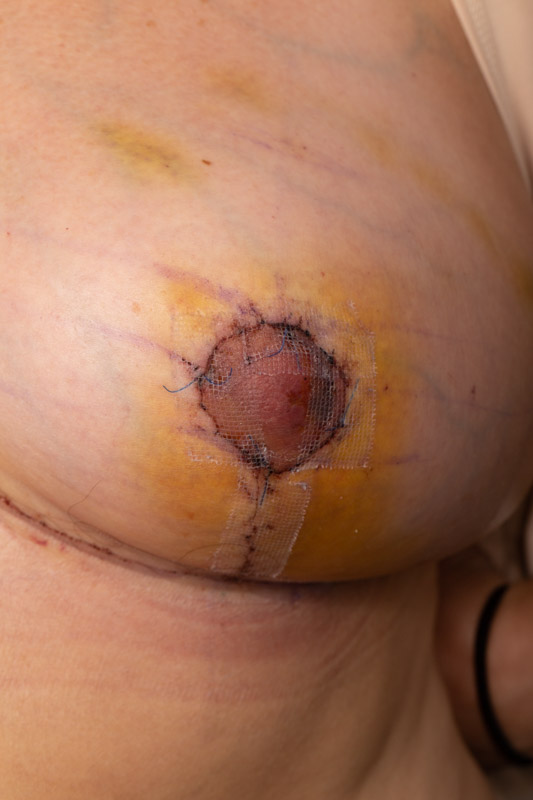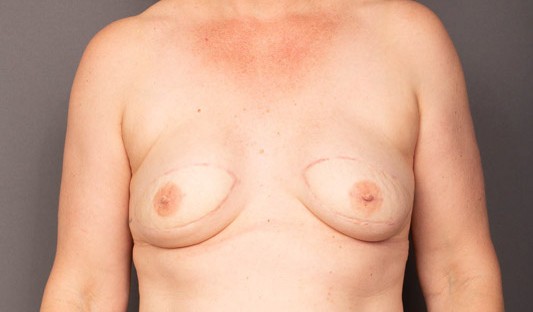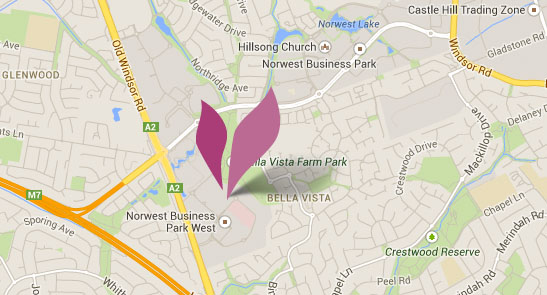Dr Gavin Sandercoe
Treating Nipple Necrosis
What happens if the operation results in an abnormal blood supply to a nipple?
Sometimes during a breast reduction or lift, your Specialist Plastic Surgeon might notice that one (rarely both) nipple is struggling with the blood supply that is remaining after they move your nipple and reshape your breast. A nipple that has not enough blood going into it might turn pale, whereas a nipple that is struggling to get blood back out of it will turn purple. These colour changes are easier to notice in pale areolas, and harder to observe in very dark areolas. There are techniques that your Specialist Plastic Surgeon can employ to help correct an abnormal blood supply to a nipple, but sometimes the alteration in blood supply is only visible after the operation.

What happens if my nipple has altered blood flow only after my surgeon finishes my breast reduction or breast lift operation?
This can happen but is more commonly a progression of altered blood flow that is not noticed during the operation. A haematoma around the nipple/pedicle is a good example of how a post-operative complication can change the blood supply of an otherwise happy nipple. Once again, there are strategies that your Specialist Plastic Surgeon can utilise to save or salvage your nipple. There are drugs that can be used to help blood flow through dilating blood vessels or thinning the blood. Bleeding can be encouraged to help a nipple that is struggling to get enough blood out.
It is Dr Sandercoe’s experience that a pale or purple nipple usually is the tip of the iceberg (pun intended). As things heal the altered blood supply is often proven to be not only to the nipple, but also to the underlying pedicle. This breast tissue may recover, but it may also undergo necrosis and present as a firm lump of dead breast tissue. If this is uncomfortable for the patient, this tissue should be removed once the overlying breast gland and skin has healed and is stable. Once again, this results in a smaller breast on the side that struggled with blood supply.
Do other areas of breast tissue have problems with blood supply?
Yes, although it is less common. Specialist Plastic Surgeons refer to the segments of breast gland outside of the pedicle as the pillars. The breast tissue in the pillars can also have tissue that does not survive the operation due to inadequate blood inflow or outflow. This is rarely noticeable during a procedure and rarely causes post-operative problems other than unpredicted volume asymmetry.
What do you do about breast asymmetry?
As the reader can see from the above, most strategies to salvage a nipple will lead to a smaller breast on that side. Given the uncertainty of how things will settle, it is Dr Sandercoe’s preference to adjust breast volume asymmetry at least 3 months after things have completely settled. This allows for greater predictability of the final result. Many patients that have had a breast reduction prefer the shape and size of their smaller breast, so further reducing the ‘normal’ breast is their best strategy. Patients that have had a breast lift often request a matching to the larger/normal breast, so fat transfer or breast implants are their best option.
What can be done in pre-operative planning to minimise the risk of nipple necrosis?
Unfortunately, your Specialist Plastic Surgeon cannot 100% prevent nipple necrosis with smarter surgical planning of your breast reduction or breast lift. There are times where a well-designed operation has problems just because of bad luck with your blood vessels. At this stage there is no good imaging of blood vessels in the breast that can be used to change a surgeon’s decision on the appropriate pedicle for your desired breast volume and shape. Some pedicles have a reputation for a more robust blood supply, but that often comes with an increased volume of underlying breast tissue. Using those pedicles is unlikely to give an acceptable result for a lady wanting to drop from an F cup to a C cup. Every decision in surgical planning has pros and cons, and your Specialist Plastic Surgeon has the training and experience to balance these out to get you your best result.
How does a Specialist Plastic Surgeon deal with a dead nipple?
During the 5 years of surgical training that Specialist Plastic Surgeons undertake, we are all taught about breast reconstruction for breast cancer and congenital breast abnormalities. Part of this training is nipple reconstruction techniques. If you are unfortunate enough to have a nipple that completely dies, your Specialist Plastic Surgeon will remove any dead or dying tissue and let your breast heal. A little while later they can create a nipple shape through various techniques. The addition of colour requires tattooing by a paramedical tattoo artist.

Dr Gavin Sandercoe recommends that all women considering a breast reduction or lift consult with a Specialist Plastic Surgeon (or two) in Sydney to discuss the benefits and risks of their proposed procedure. Our contact form is below to contact our team and arrange a consultation with Dr Sandercoe.
Patient Education Library




